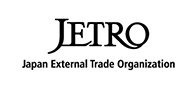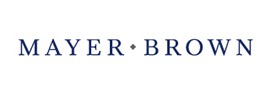Key Findings:
- Plunkett Research analyzes the top trends changing the industry, and provides in-depth industry statistics. In addition, this publication profiles the top 300 companies in the Advertising & Branding Industry.
Available Formats:
- Printed Almanac: ISBN 978-1-62831-619-3 (Available Now)
- E-book: ISBN 978-1-62831-919-4 (Available Now)
- Plunkett Research Online (Subscribers)
Key Features Include:
- Industry trends analysis, market data and competitive intelligence
- Market forecasts and Industry Statistics
- Industry Associations and Professional Societies List
- In-Depth Profiles of hundreds of leading companies
- Industry Glossary
Pages: 492
Statistical Tables Provided: 10
Companies Profiled: 356
Geographic Focus: Global
Price: $379.99
Key Questions Answered Include:
- How is the industry evolving?
- How is the industry being shaped by new technologies?
- How is demand growing in emerging markets and mature economies?
- What is the size of the market now and in the future?
- What are the financial results of the leading companies?
- What are the names and titles of top executives?
- What are the top companies and what are their revenues?
This feature-rich book covers competitive intelligence, market research and business analysis—everything you need to know about the advertising & branding business including:
- Introduction to the Advertising and Branding Industry
- The Coronavirus’ Effect on the Advertising & Branding Industry
- Agencies Face Both Evolving Client Needs and Vast Changes in Media
- Digital & Search Advertising Soar, Has Larger Market Share of U.S. Advertising Than TV
- Metaverse Provides Advertising Opportunities
- Programmatic Ad Buying Dominates the Market
- Global Internet Market Tops 5.2 Billion Users/Ultrafast Broadband Expands, both Fixed and Wireless
- Television Ads Evolve to Face New Challenges, Formats and Online Competitors
- DVR Market Evolves/Time-Shifting Hurts Advertisers
- Embedded Advertising/Product Placement/Branded Entertainment and Marketing Soar
- Social Media Generates Billions of Dollars in Global Online and Mobile Ad Revenues
- Email Reigns as One of the Single Most Effective Advertising Tools
- Newspapers and Magazines Rely on Digital Editions and Apps
- Billboards Go Digital
- Location-Based Services (LBS) Enhance Smartphones and Mobile Advertising
- Private Label Brands Grow in Share of Total Store Sales
- LOHAS-Socially Conscious Consumers Create Challenges and Opportunities for Advertisers and Marketers
- Growth in China’s Ad Market
- Growth in Big Data Supported by Expansion of Cloud Computing and Predictive Analytics
- Retail Technologies and Artificial Intelligence (AI) Advance for Store Checkout and
Restaurant Orders
- Online Marketing, Social Media and Ecommerce Enable Startups/Disruption in Consumer Products and Cosmetics
- Consulting Firms Acquire Digital Advertising Agencies, Extending Their Marketing Services
Advertising & Branding Industry Statistics
- Advertising & Branding Industry Statistics and Market Size Overview
- Estimated U.S. Advertising Sector Revenues by NAICS Code: 2014-2021
- Advertising Agencies, Public Relations Agencies & Direct Mail Advertising: Estimated Sources of Revenue & Expenses, U.S.: 2015-2020
- Employment in Advertising & Related Industries, U.S.: 1990-January 2022
- Internet Publishing & Broadcasting & Web Search Portals: Estimated Revenue & Expenses, U.S.: 2016-2021
- Newspaper Publishers: Estimated Sources of Revenue & Expenses, U.S.: 2016-2021
- Periodical Publishers: Estimated Sources of Revenue & Expenses, U.S.: 2016-2021
- Radio Networks & Radio Stations: Estimated Sources of Revenue & Expenses, U.S.: 2016-2021
- Television Broadcasting: Estimated Sources of Revenue & Expenses, U.S.: 2016-2021
- Cable & Other Subscription Programming: Estimated Sources of Revenue & Expenses, U.S.: 2016-2021
Companies Mentioned Include:
- Walt Disney Company
- Disney Media & Entertainment Distribution
- WarnerMedia (Warner Media LLC)
- DirecTV LLC (DIRECTV)
- ESPN Inc
- Fox Corporation
- Accenture Interactive Operations
- Dai Nippon Printing Co Ltd
- News Corporation
- Hakuhodo Inc



















